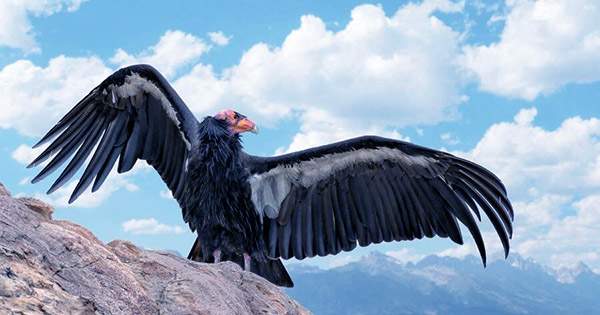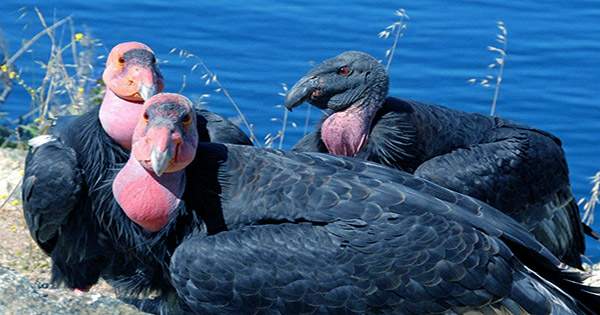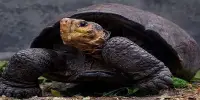As feminist and social activist Irina Dunn once put it, “a woman needs a guy as a fish needs a bicycle.” Unless, of course, she wants to have a child, in which case a male can be a helpful addition to the process.
That is because, like most other creatures, humans must mate in order to reproduce – but it is not the only choice. Sharks, snakes, and Komodo dragons are just a few examples of creatures that may reproduce without mating.
Condors in California, it turns out, can do the same. For the first time, a new study published in the Journal of Heredity reveals that these critically endangered birds, previously reduced to a population of only 22, have been increasing their numbers in an unusual way: without the assistance of a male.
“I’ve recounted the tale a few times, and I still get shivers,” Oliver Ryder, Kleberg Endowed Director of Conservation Genetics at the San Diego Zoo, said. “Wow!” said the narrator. It came by chance, like so many of the finest breakthroughs. Ryder told IFLScience, “We weren’t seeking for it – but it smacked us in the face.”

The ability of California condors to breed in this manner is only the latest finding from the San Diego Zoo Wildlife Alliance’s three decades of condor recovery research. When the last wild condors were placed into captivity in 1987, there was no way of sexing individuals, and the species assumed monogamous.
Previous findings from the facility have already upended our knowledge of the giant birds. Neither of these statements holds true today. “We were requested to… establish a mechanism to sex the birds as part of [the conservation] effort,” Ryder told IFLScience. “Male condors have the appearance of female condors.”
Fortunately – or unfortunately, if you are a condor – there is one major issue with the species’ recovery: lead poisoning. According to Ryder, researchers would require a blood sample from each condor to determine the magnitude of the problem – samples that may also disclose the bird’s sex and lineage.
Ryder told IFLScience, “They were intended to be partnered for reproduction.” “We didn’t want to match closely related animals — as it turned out, we now know that a couple of the wild birds were in a parent-offspring connection.” That was something we wanted to avoid.”
Condors progressively released into the wild as the conservation campaign gained traction – now, more than half of the world’s 500 or so California condors dwell in wilderness areas across California and Mexico – but researchers continued to collect blood samples and monitor ancestry.
The more information they acquired, however, the more turmoil they discovered: labeling errors, misdiagnosed parents, and the shocking finding that condors are not monogamous. “We decided to merely look at the parentage of all of the condors in the program out of an abundance of caution,” Ryder said. “It didn’t matter if they were in managed care or roaming free.”
However, two females perplexed the researchers. They were born to females who shared a house with one guy, thus tracing their ancestors should have been simple. However, DNA testing revealed that their moms’ resident man was not their father. In actuality, none of the condors that were males were males in the first place.
“I was on my way home with my bag on, heading to the parking lot,” Ryder recounted, “when [research co-author Leona Chemnick] said, ‘Can I talk to you about the condor parentage, there’s something unusual going on.'” Ryder only had one question when Chemnick outlined the situation.
He told IFLScience, “I said, are these males?” “When she replied yes, I told her that she had just found parthenogenesis in California condors… There is no other explanation that makes sense. “It was the farthest thing from our minds,” he explained.
This would be great news for any species, but it has major consequences for California condors, which are already battling to survive. The paper notes that asexual reproduction “could assist range expansion when populations are at very low densities,” and that “when the majority of population recruitment is due to sexual reproduction, [it] may contribute to reducing genetic load via purging of deleterious mutation” – both of which would be beneficial to the condor’s reintroduction into the wild.
Unfortunately, for the researchers, the two chicks that were born because of these phenomena are now dead — and despite living for years, they were in poor condition. However, Ryder warned against blaming their virgin births: “It’s a valid question,” he told IFLScience but they cannot answer just yet. He explained, “It’s only two birds, and we didn’t understand they were remarkable until after they perished.” They are not subjected to any additional inspection. However, if they contained a fatal gene, they would not have occurred. We wouldn’t have spotted them if it hadn’t been for the fact that they were there.”
While there is still a lot of work to be done – the team is already sequencing the California condors’ entire genome to try to figure out how the parthenogenesis occurred – the discovery of successful parthenogenesis in a previously unknown, critically endangered species serves as a reminder that there is still a lot we do not know about the natural world.
Ryder told IFLScience, “We only noticed this because we were performing this really comprehensive pedigree investigation of the entire condor history.” “Can you tell me how many species this is for? There are not many… Perhaps this is going on all around us and we aren’t aware of it because we haven’t thought to look.” “We didn’t think life could do this, but it turns out it can.” It took place. He went on to say, “It didn’t happen once, it happened twice.” “Nature should not be taken for granted.” We have yet to comprehend the mysteries that lie under the surface.”
















